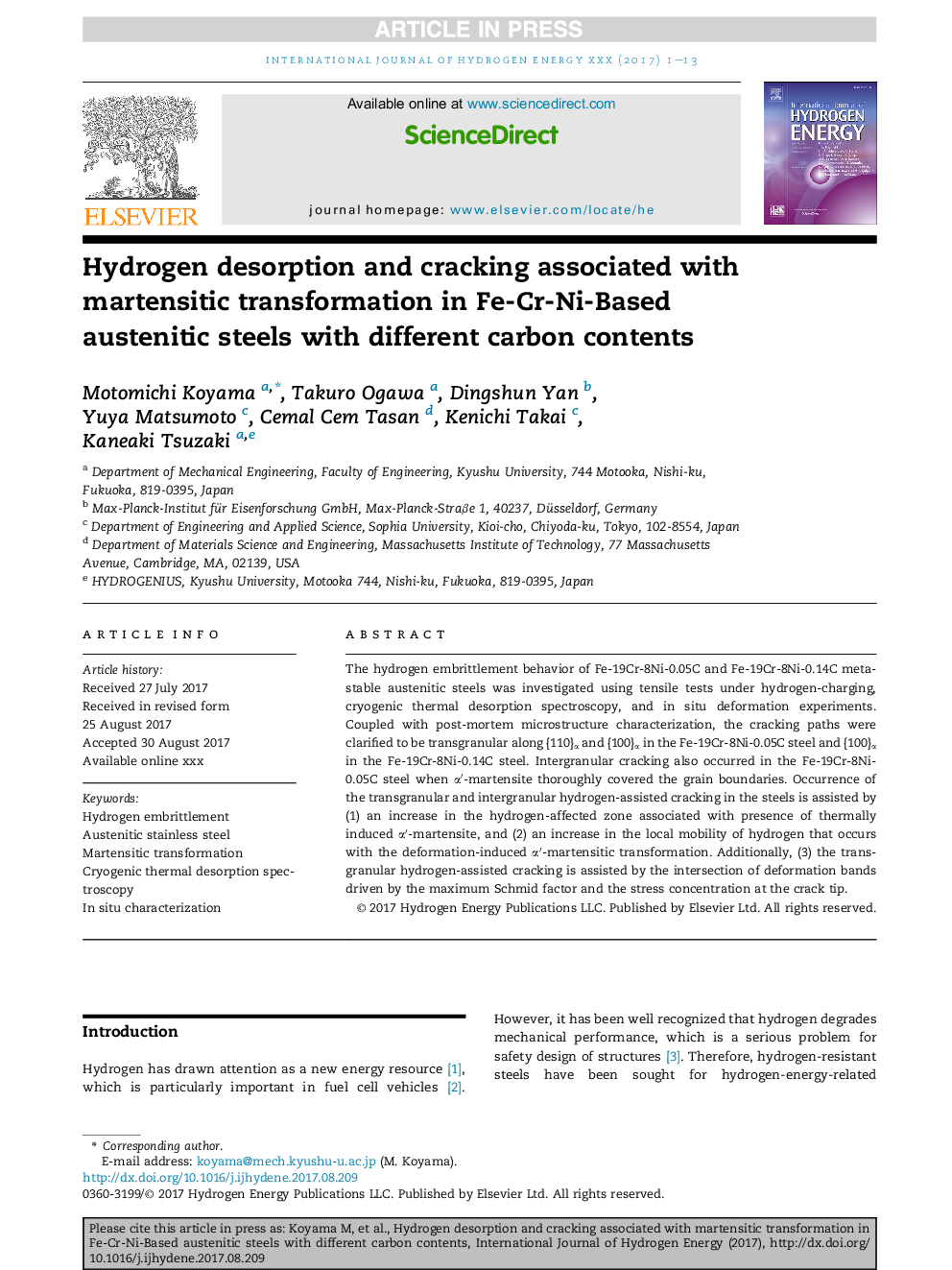| Article ID | Journal | Published Year | Pages | File Type |
|---|---|---|---|---|
| 5145075 | International Journal of Hydrogen Energy | 2017 | 13 Pages |
Abstract
The hydrogen embrittlement behavior of Fe-19Cr-8Ni-0.05C and Fe-19Cr-8Ni-0.14C metastable austenitic steels was investigated using tensile tests under hydrogen-charging, cryogenic thermal desorption spectroscopy, and in situ deformation experiments. Coupled with post-mortem microstructure characterization, the cracking paths were clarified to be transgranular along {110}α and {100}α in the Fe-19Cr-8Ni-0.05C steel and {100}α in the Fe-19Cr-8Ni-0.14C steel. Intergranular cracking also occurred in the Fe-19Cr-8Ni-0.05C steel when αâ²-martensite thoroughly covered the grain boundaries. Occurrence of the transgranular and intergranular hydrogen-assisted cracking in the steels is assisted by (1) an increase in the hydrogen-affected zone associated with presence of thermally induced αâ²-martensite, and (2) an increase in the local mobility of hydrogen that occurs with the deformation-induced αâ²-martensitic transformation. Additionally, (3) the transgranular hydrogen-assisted cracking is assisted by the intersection of deformation bands driven by the maximum Schmid factor and the stress concentration at the crack tip.
Keywords
Related Topics
Physical Sciences and Engineering
Chemistry
Electrochemistry
Authors
Motomichi Koyama, Takuro Ogawa, Dingshun Yan, Yuya Matsumoto, Cemal Cem Tasan, Kenichi Takai, Kaneaki Tsuzaki,
